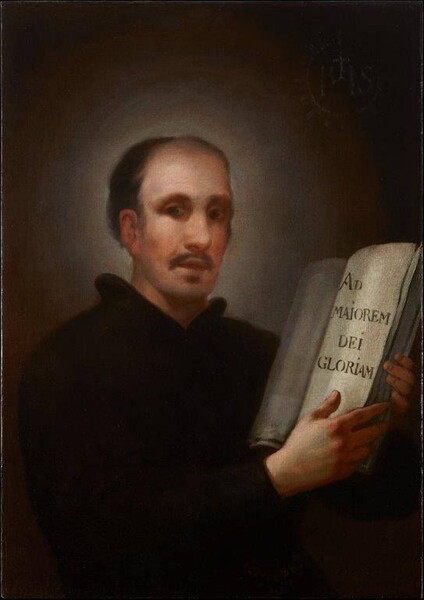- Cronología
- Ca. 1775
- Ubicación
- Museo Goya. Colección Ibercaja, Zaragoza, Spain
- Dimensiones
- 85 x 57 cm
- Técnica y soporte
- Oil on canvas
- Reconocimiento de la autoría de Goya
- Undisputed work
- Titular
- Private collection
- Ficha: realización/revisión
- 26 Aug 2022 / 08 Jun 2023
- Inventario
- -
Camón Aznar mentions that this picture was painted for Ignacio Ezcurra, viceroy of the Río de la Plata, and that according to its auction record at Christie's it belonged to Encarnación Ezcurra and later to Gregoria Rosas Ezcurra, daughters of the former. In fact, we know that Juan Ignacio de Ezcurra Ayerra (Pamplona, 1750 - Buenos Aires, 1827) moved to Argentina in the 1770s and that he carried out different mercantile and other activities there, but not as viceroy. Encarnación was his fifth daughter (Buenos Aires, 1795 - 1838), married to the Argentine military and politician Juan Manuel Ortiz de Rozas (or Rosas). Gregoria Ortiz de Rozas (or Rosas), sister of Juan Manuel, married Felipe Ignacio de Ezcurra Arguibal, eldest son of Juan Ignacio. Consequently, Encarnación and Gregoria were sisters-in-law twice, but not sisters.
The painting of Saint Ignatius belonged to the Ezcurra family (maybe until the 1970s), so it has traditionally been assumed that it was Juan Ignatius who commissioned it from Goya in honor of his patron saint. Sold at Christie's, London, 1976; private collection, Madrid, 1979; private collection, Zaragoza; for sale at the Ansorena gallery, Madrid, 2019, with no successful buyer; on loan to the Museo Goya Ibercaja, Zaragoza, March 2021.
The Saint founder of the Jesuits is represented half- body in the black robe of his order. He turns to the right, but directly looks at the viewer. He stands on a neutral background, although tinged by the luminous aura that enhances his head and serves as his halo. A book in his hands is engraved with the slogan of the Society of Jesus: “AD / MAIOREM / DEI / GLORIAM" (To the greater Glory of God).
On the upper right, the monogram of the name Jesus, also distinctive of the order. All this follows the traditional iconography of the saint, which was established at the time of his canonization in 1622, although here he does not wear the usual beard, only a moustache. This detail and the emotional and serene expression of the face and gaze provide a touch of a naturalness through which Goya manages to bring us closer to the character. Goya´s skills in the application of colour, reddish tones and veiling is clearly evident in the face and hands, showing slightly the transparency of the skin. However, an academicist language of a mengsian character is the prevailing one.
-
Goya joven (1746-1776) y su entornoMuseo e Instituto Camón AznarZaragoza1986consultant editorl José Rogelio Buendía. November 21st to December 20th 1986cat. 35
-
Goya y Zaragoza (1746-1775). Sus raíces aragonesasMuseo Goya. Colección IbercajaZaragoza2015cat. 24
-
Murcia2015
-
Madrid2022
-
Nuevas aportaciones a la obra de GoyaGoyaZaragoza1979pp. 201-202
-
Goya joven (1746 – 1776) y su entornoZaragozaCaja de Ahorros y Monte de Piedad de Zaragoza, Aragón y Rioja1986p. 92
-
Goya y Zaragoza (1746-1775). Sus raíces aragonesasZaragozaFundación Goya en Aragón, Ibercaja y Gobierno de Aragón2015pp. 156-157
